Buyer's guide for cordless tools
There are a dizzying number of cordless tools, batteries and chargers on the market. Spending a lot of money on them is easy. But getting your money's worth is harder. Knowing the proper way to use and care for your cordless tools can be the difference between a lithium-ion battery that dies after a year and one that's still going strong after three. Read on for tips in this buyer guide that will help you get the most out of your cordless tools.
Tip 1: Buy lithium-ion
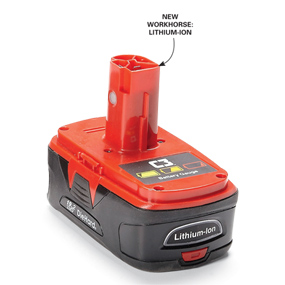
Lithium-ion batteries are quickly displacing nickel cadmium as the standard batteries on cordless tools. Although lithium-ion (li-ion) batteries can cost twice as much or more, they're worth it. They're small and lightweight, they run at top power longer, they're good for two to three times more charge cycles than nicads, and they can sit for months without losing a charge.
They do have a couple of downsides, however. Besides cost, they perform worse than nicads in extreme temperatures (below zero and above 105 degrees F). But competition among manufacturers is starting to drive down prices of lithium-ion batteries. And the newest smart?chargers and extreme weather performance?features help keep lithium-ion batteries cool while charging, and working longer in below-zero temperatures.
From Ron Kruppa Field Editor: I waited until my nicad cordless tools died, weighed the options (literally!), and bought a lithium-ion cordless drill. I only wish the nicad drill had died sooner.
Tip 2: Six ways to make your lithium-ion battery last longer
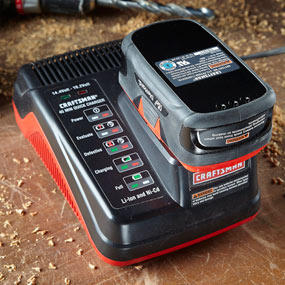
A lithium-ion battery is expensive. Follow these tips to get the most charge for your ka-ching.
- 1 Don discharge it completely
Running a lithium-ion battery until it fully discharged can lead to an early death. Try not to discharge it lower than 20 percent before recharging it. Recharge it when you notice even the slightest drop in performance. Don wait until yourtool has stopped working. - Charge it frequently
You might have heard that it's best to charge batteries only when they need it. Not true. Frequent charging is good for them, even when they're only partially discharged. - Charge it at the right temperature
The optimum temperature range for charging lithium-ion batteries is 40 to 85 degrees F. Charging them at extreme temperatures (below 32 degrees F and above 105 degrees F) disturbs the chemical reaction taking place in the cells and can result in a permanent loss of run-time. Keep your charger indoors or in the shade. - Store it partially charged where it cool (but not freezing)
Lithium-ion batteries generally last three to five years if stored properly. Extreme temperatures shorten their life span, so don't store them in your truck, garage or freezer. Store them in a cool place, like your basement or refrigerator, at about 40 percent charge. This partial charge keeps the battery and its protection circuit operating during storage. - Buy fresh batteries
Lithium-ion batteries have a finite life span. They start to slowly degrade right after theye manufactured, so it's important to buy the freshest batteries possible. Check the date code on the battery or packaging to make sure you're buying a fresh battery (instead of one that's been sitting on a distributor shelf for a year). - Use your batteries frequently
Don't buy an extra battery and store it for long periods. The battery will degrade more rapidly if it's not used at least every couple of months. If you have two, be sure to use them both.
From Field Editor Bill Skog:
Read the owner's manual on the care of batteries. I work at an industrial supply company, and I constantly see people bringing tools back because the batteries don't last due to poor care.
Tip 3: Save money with bare tools
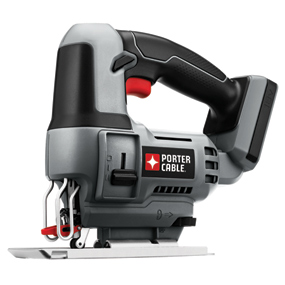
Several manufacturers offer bare tools (the tool only), and what you see at home centers is often just a fraction of what available. Check online for the widest selection. Porter- Cable Bare-Tool 18V Cordless Jigsaw costs about $60 at online retailers.
Tip 4: Two batteries are better than one
Buy a kit with two batteries. It's almost always cheaper than buying a cordless tool with one battery and buying a second battery separately.
From Field Editor David Hawkins:
An extra battery is a must unless you want your battery to decide when you will be taking breaks.
Tip 5: Shop for a system, not just a tool
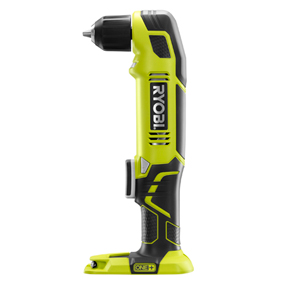
You may be drawn to a drill, but think about future tools before you choose. If the batteries and charger from your first tool can power other tools, you can buy are? tools in the future and save a lot of money. Most manufacturers offer a wide variety of tools that accommodate the same battery type. Eighteen-volt tools in particular have a broad range of options.
Ryobi's 18 Volt One+ system (shown here) has more than 50 tools that fit its 18-volt battery pack and includes cordless lawn, garden and household products. Sticking with one voltage size from a single brand means you'll always have charged batteries and enough chargers.
Tip 6: Brushless is cutting edge
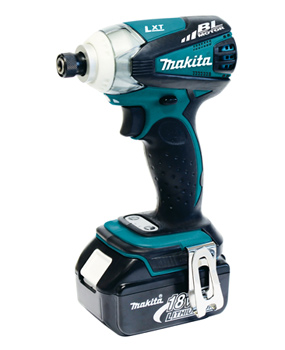
Pro-grade manufacturers offer at least a few tools with brushless motors. Brushless motors eliminate the physical connection between parts, which eliminates friction and wasted energy. Manufacturers claim brushless motors increase run-time by 50 percent and more compared with motors with brushes. Early reviews among users are extremely positive.
Initially, brushless tools will cost $30 to $100 more than the brushed versions and will be limited to drills, drivers and impact wrenches. But as this technology gains wider acceptance, prices are bound to come down and you'l find brushless motors in saws and other tool types. (And then watch for deep discounts on tools with brushed motors!)
Tip 7: Buy battery packs with fuel gauges
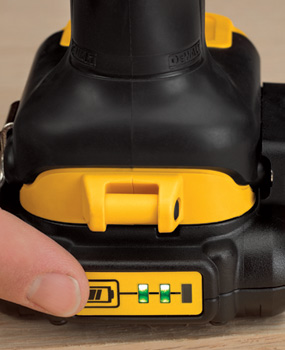
揊uel gauges?right on the pack or tool can be a lifesaver for lithium-ion batteries. Not only can you tell at a glance how much charge is left when you're up on a ladder, you'll extend the life of the battery by getting it on the charger before it's fully discharged.
Tip 8: Smart chargers extend battery life
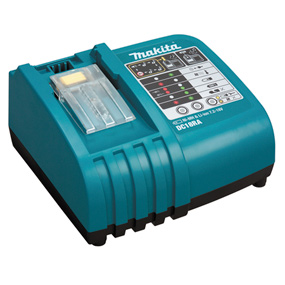
Batteries are the costliest part of your cordless tool, and a bad charger can shorten your battery life due to incorrect charging and overheating. mart?chargers like the Makita DC18RA Rapid Battery Charger have electronic sensors and temperature and voltage controls that communicate with a chip inside the battery pack for optimal charging. The Makita DC18RA charger (photo) has a fan that blows air through the battery to cool it before charging so the battery can be charged quickly (a 3.0 amp-hour lithium-ion battery in 22 minutes). It costs about $45 and up at home centers and online retailers.
Craftsman's NEXTEC QuickBoost 12V Charger (photo; about $35) achieves a 25 percent charge in three minutes and a full charge in 30 minutes. This means you can get enough juice in a dead battery to finish up that task you're working on without waiting.
Tip 9: Same voltage, different run times
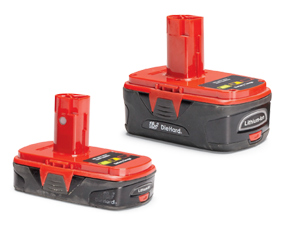
Batteries of the same voltage often come with different amp-hour ratings. Those with higher amp-hour ratings are larger and heavier, and they cost more and have longer run-times. Some companies list the amp-hours on the battery; others name them (such as DeWalt's compact and XRP versions and Bosch抯 Slim Pack and Fat Pack; neither shown). A compact 1.5-Ah battery (vs. a larger 3.0-Ah battery) is usually fine for weekend DIYers, especially with a fast charger.
Tip 10: Don't write off corded tools
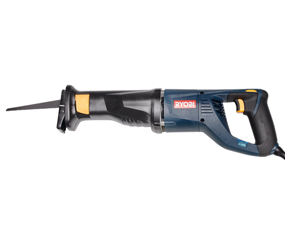
You can't argue with the convenience of cordless tools. But in most cases, the batteries will die long before you've worn out the tool. And in the case of tools requiring heavy power, like circular saws and reciprocating saws, using corded tools delivers more. They'll last forever and cost less.